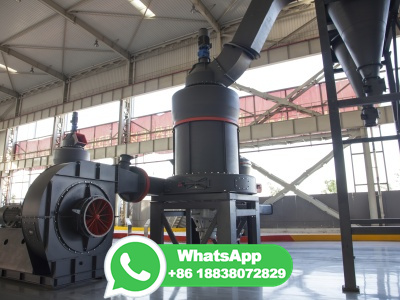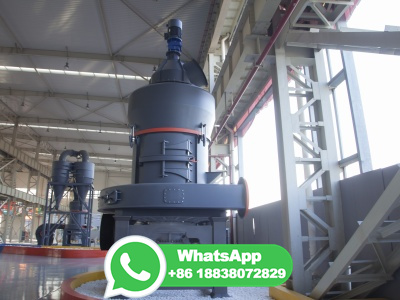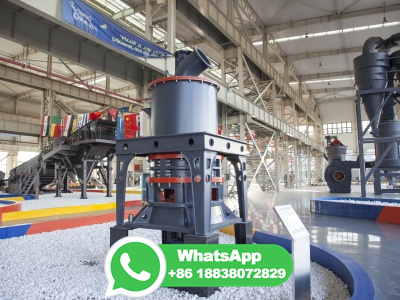
Convert A Single Coordinate Value. Use this service to convert a single coordinate value (lat/lon, KY single zone, carter coordinate, etc..) to 14 different coordinate values. ... Most of the chemicals derived from coal come from byproducts produced during the coking process. Coal is used to make coke to make steel. Coke gas (also called foul ...
WhatsApp: +86 18838072829
Formed coke process. A formed coke process where coal is briquetted and carbonized is totally different from the conventional cokemaking process where powder coal is carbonized and transformed into a lump coke in a slottype coke oven chamber. In this section, two examples of the formed coke process from Japan are reviewed.
WhatsApp: +86 18838072829
In this study, we studied the feasibility of preparing highquality needle coke from coal liquefaction pitch. Nine types of blending pitch (coal liquefaction pitch and anthracene oil mixed with different ratios) were used as raw materials to generate needle coke via the cocarbonization method. Optical microscopy, Xray diffraction, Raman spectroscopy and scanning electron microscopy were ...
WhatsApp: +86 18838072829
1. When coal is heated to a certain temperature while cutting out air supply, it turns into a residue of solid carbonaceous form known as coke. 2. The nature of the residue depends on the temperature at which the coal is heated. Generally it is hightemperature carbonization which helps convert coal to coke.
WhatsApp: +86 18838072829
Coal tar pitch is a byproduct of metallurgical grade coke (metcoke) production. ... Magean, Liviu, Stansberry, Peter G, Stiller, Alfred H, and Zondlo, John W. PRODUCTION OF CARBON PRODUCTS USING A COAL EXTRACTION PROCESS. United States: N. p., 2004. Web. doi:/887333. ... A Novel Process for Converting Coal to HighValue Polyurethane ...
WhatsApp: +86 18838072829
Coke is a fuel used in the steelmaking process that is created by heating coal in the absence of air. Myth: The process of coke manufacturing is very complex and cannot be understood by anyone other than a scientist or engineer. Reality: The manufacturing of coke involves a number of different processes. An understanding of these processes ...
WhatsApp: +86 18838072829
In industrial chemistry, coal gasification is the process of producing syngas—a mixture consisting primarily of carbon monoxide (CO), hydrogen (H 2), carbon dioxide (CO 2), methane (CH 4), and water vapour (H 2 O)—from coal and water, air and/or oxygen.. Historically, coal was gasified to produce coal gas, also known as "town gas".Coal gas is combustible and was used for heating and ...
WhatsApp: +86 18838072829
Coal gasification is an important industrial process for converting raw coal into more useful and cleaner carbon feedstocks for use in power generation and as precursors for other transformations. ... In the formation of coke from coal, the process of hydrocarbon gas generation during devolatilization typically finishes rapidly because of high ...
WhatsApp: +86 18838072829
The operational efficiency of a coke plant depends on three vital aspects: first, the produced coke should meet the quality standards required for the use of modern blast furnaces; second, the environmental consideration; and third, the cost of the coke.
WhatsApp: +86 18838072829
Abstract. Development of renewable energy is essential to mitigating the fossil fuel shortage and climate change issues. Here, we propose to produce a new type of energy, biocoal, via a fast pyrolysis coupled with atmospheric distillation process. The high heating values of the asprepared biocoals from the representative biomass are within ...
WhatsApp: +86 18838072829
Offtake flues on either end remove gases produced. Process heat comes from the combustion of gases between the coke chambers. Individual coke ovens operate intermittently, with run times of each oven coordinated to ensure a consistent flow of collectible gas.
WhatsApp: +86 18838072829
Coke is produced by heating coal in ovens to vaporize any volatiles in the coal. One of the streams from coke ovens is coke oven light oil. This oil mainly comprises benzene, toluene and xylene (BTX), with benzene being the predominant aromatic. ... However, China did invent a new technology for converting coal to MEG. The new process ...
WhatsApp: +86 18838072829
It was reported that the emissions of CO 2, CH 4, and N 2 O in the combustion process are about,, and times that of the coal combustion process, respectively [6]. Fortunately, gasification provides a relatively green and efficient utilization technology for converting PC to syngas [7].
WhatsApp: +86 18838072829
Explanation: The process of converting coal into coke is called carbonization. When coking coal is heated in absence of air, porous, strong and hard residue left is called coke. 3. Depending on the behaviour of the coal, when it is heated in the absence of air, it can be categorized into _____ categories. a) 2 b) 3 c) 4
WhatsApp: +86 18838072829
Cleanly converting coal, petroleum coke and biomass into highvalue products and power Air Products Syngas Solutions™ formerly: • Shell Coal Gasification Process (SCGP) ... The Air Products Gasification Process, which can convert a wide range of coals, including petcoke and biomass, into syngas Value delivered Highvalue products or power ...
WhatsApp: +86 18838072829
The process of converting coal to coke is known to produce a number of pollutants, including a mixture of polycyclic organic matter, benzene, and other chemicals that can cause cancer. While the exact emissions from coke oven batteries vary depending on the type of coal being used, the operating conditions of the battery, and other factors, it ...
WhatsApp: +86 18838072829
Introduction to Coke making process. Coke making process involves carbonization of coal to high temperatures in an oxygen deficient atmosphere to concentrate the carbon. The volatile constituents of the coal, including water, coalgas and coaltar, are driven off by baking in an airless oven at temperatures as high as 1000 °C, so that the fixed carbon and residual ash are fused together.
WhatsApp: +86 18838072829
The coke byproduct consists of non condensable gases as primary by product and condensable matter or tar as secondary byproduct, collectively represent about 20 − 25 wt% of the parent coal. The coke oven gas which accounts for ∼15 − 20 wt% of the coking process is mainly composed of H 2 (derived from aromatic condensation) and CH 4 ...
WhatsApp: +86 18838072829
As the coppicing of forests became unable to meet the demand, the substitution of coke for charcoal became common in Great Britain, and coke was manufactured by burning coal in heaps on the ground so that only the outer layer burned, leaving the interior of the pile in a carbonized state.
WhatsApp: +86 18838072829
This invention is directed to a process for converting coal into useful liquids, solids, and gases, by combined processes of coal carbonization and liquefaction in which the carbonization reaction yields hydrogen suitable for the liquefaction. The heavy liquid products from the liquefaction and the carbonization may be combined with the solid char to form a metallurgical coke.
WhatsApp: +86 18838072829
Coal carbonization is the process by which coal is heated and volatile products (liquid and gaseous) are driven off, leaving a solid residue called coke. Carbonization of coal involves heating coal to high temperatures either in the absence of oxygen (O2) or in control quantity of O2. A gaseous byproduct referred to as coke oven gas (COG ...
WhatsApp: +86 18838072829
Abstract High temperature dry distillation of bituminous coal to make metallurgical coke is one of the main ways of coal conversion and utilization. Coke is porous and the pore structure largely affects the strength, permeability and reactivity of the coke. This thesis explores the key factors affecting the formation of coke pore structure. The thermolytic flow processes of various coking ...
WhatsApp: +86 18838072829
The recovery of coal chemicals is an economical necessity, as they equal approximately 35 percent of the value of the coal. To produce quality metallurgical coke, a hightemperature carbonization process is used. Hightemperature carbonization, which takes place above 900°C (1650°F), involves chemical conversion of coal into a mostly gaseous ...
WhatsApp: +86 18838072829
Process of carbonization of coal. The coal to coke transformation takes place as the coal is heated. When the state of fusing is reached, the layer of heated coal softens and fuses. From about 375 deg C to 475 deg C, the coal decomposes to form plastic layer. Destructive distillation reactions proceed rapidly in the plastic layer with evolution ...
WhatsApp: +86 18838072829
The Adoption of okeSweltiqhy the British Iron Industry. CHARLES K. HYDE Boston University ion of coal to the production of pig bon was one of the important innovations of the British Industrial Revolution of the eighteenth century. Coal (in the form of coke) was first used to make pig iron at the Coalbrookdale furnace of Abraham ...
WhatsApp: +86 18838072829
Indonesia's plans to build a new national coal gasification industry, converting its abundant coal resources into methanol and dimethyl ether, are moving forward after two deals were announced late last year.. In October, Indonesia's Powerindo Cipta Energy and China's stateowned China National Chemical Engineering Corporation signed an agreement to begin a feasibility study into ...
WhatsApp: +86 18838072829
Methanol is an important feedstock of chemical engineering and energy source, and it is mainly produced by coal route in China. The coaltomethanol suffers from serious CO 2 emissions and carbon resource waste since water gas shift is involved in this process to increase hydrogen content of syngas for meeting methanol novel coaltomethanol process integrated with cokeoven gas ...
WhatsApp: +86 18838072829
This will only be possible with a better understanding of the fundamental aspects of the coking process, properties of coals and their functions in the coaltocoke conversion. This understanding is also necessary because of the gradually increasing stringency of requirements made on coke by modern industrial practices, maximum output ...
WhatsApp: +86 18838072829
Introduction. As the world's largest coke producing country, China produces approximately 471 million tons of coke, and the production of cokeoven gas (COG), a byproduct of the coaltocoke conversion process, is nearly 210 billion m 3 [1,2]. COG is a hydrogenrich gas containing H 2 (5860 vol%), CH 4 (2327 vol%), CO (58 vol%), and CO 2 (<3 vol%) and is a valuable raw material for ...
WhatsApp: +86 18838072829
the process of converting coal into coke using the byproduct coke oven, the volatile matter in the coal is vaporized and driven off. This volatile matter leaves the coke oven chambers as hot, raw coke oven gas. After leaving the coke oven chambers, the raw coke oven gas is
WhatsApp: +86 18838072829
The conversion of coal to liquid fuels and/or chemicals. ... Coal provided heat for homes and industry, fuel gas for town lighting, process gas for industry, coke for the iron industry, and fuel for steam locomotives and shipping during the first quarter of the twentieth century. Although electric power has supplanted coal gas for public ...
WhatsApp: +86 18838072829
A method of recovering coal liquids and producing metallurgical coke utilizes low ash, low sulfur coal as a parent for a coal char formed by pyrolysis with a volatile content of less than 8%. The char is briquetted and heated in an inert gas over a prescribed heat history to yield a high strength briquette with less than 2% volatile content.
WhatsApp: +86 18838072829
gasifier. (Show more) coal gasification, any process of converting coal into gas for use in illuminating and heating. The first illuminating gas was manufactured from coal in England in the late 18th century by the process of carbonization or destructive distillation, heating coal in the absence of air, leaving a residue of coke as a byproduct.
WhatsApp: +86 18838072829